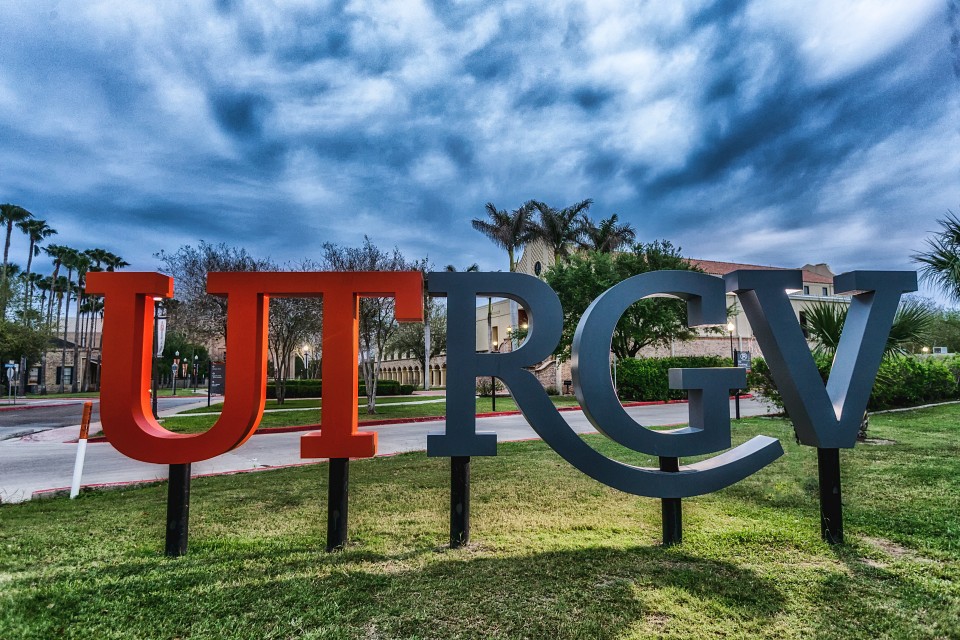
UTRGV
News Release | Research

UTRGV
Monday, August 27, 2018
Faculty Focus, Around Campus
By Amanda Alaniz
RIO GRANDE VALLEY, TEXAS – Hispanic workers continue to receive less earnings than their white counterparts, according to a new study from the Economic Policy Institute, an independent, nonprofit think tank that researches the impact of economic trends and policies on working people in the United States.

The study titled “The Hispanic–white wage gap has remained wide and relatively steady” was conducted by Dr. Marie Mora, UTRGV professor of economics and Faculty Associate for Faculty Success and Diversity, and Dr. Alberto Dávila, dean of the Donald L. Harrison College of Business at Southeast Missouri State University.
Hispanics represent nearly 18.1 percent of the U.S. population, making their labor market outcome an important economic policy issue, the study states.
“We were a little bit surprised by some of our findings,” Mora said. “For example, the earning gaps have been so persistent over this long period of time, we would’ve expected some changes, maybe some narrowing.”
Mora and Dávila studied earning gaps between 1979 and 2016 or 2017, depending on the latest statistics available. They reviewed gender, national origin, education level, birthplace, immigrant status and generational status.
The statistics provided in the report were collected from the Bureau of Labor Statistics, including the Current Population Survey.
The adjusted earning gap, which accounts for differences in educational attainment and other characteristics, between Hispanic men and women and white men has remained relatively steady since 2000, according to the report.
In 2017, Hispanic men made 14.9 percent less than white men in hourly wages, while Hispanic women made 33.1 percent less than their white male counterparts.
The study also shows that a college education has helped close that gap marginally, but by no means has eliminated it.
In 2016, Hispanic women with a college education made 36.4 percent less than white men with a college education, “which is just a slightly narrower pay gap than in 1980 (37.7 percent) and is essentially the same as the pay gap between Hispanic women and white men with less than a high school education.”
Hispanic men with a college education had a narrower pay gap with white college-educated men (20.1 percent) in 2016, but it is still considerably wider than in 1980 (12.3 percent), the study states, “and wider than the pay gap between Hispanic men with less than a high school diploma and similarly educated white men in 2016 (14.9 percent).”
Mora said the findings regarding college education were unexpected.
“You look at people with the same levels of education – there’s still an earning gap. There’s a payoff for going to school because it does narrow the total earnings gap, but it doesn’t eliminate it,” she said. “And that’s where we would love to have more people join the conversation and consider what policies we might use to begin addressing that.”

But Mora said the Hispanic/white difference in education isn’t the only reason for the gaps; other factors play a role – such as access to resources, location, quality of education and potential discrimination.
DIVERSITY WITHIN DIVERSITY
The study – which looked at Mexican Americans, Cubans and Puerto Ricans, and how each group faced differences in wages– emphasizes that the Hispanic population is heterogeneous, Mora said.
“It isn’t a ‘one size fits all’ situation,” she said.
Men of Mexican, Puerto Rican and Cuban origins made 14.1 percent, 11.0 percent and 16.9 percent less in hourly wages than their white counterparts in 2016.
Women of Mexican origin made 33.5 percent less in 2016, while Puerto Rican women made 24.7 less and Cuban American women made 24.1 percent less than comparable white men.
Mora said she does think the study will raise awareness of what’s happening with the Hispanic population in the labor market, including gender, education and heritage.
“We hope in addition to raising awareness, policymakers may be able to use these results to figure out where there are issues that might need to be addressed,” she said. “For example, we’re hoping policymakers might be able to think about ways we can enforce some of the existing discrimination laws we already have.”
ABOUT UTRGV
The University of Texas Rio Grande Valley (UTRGV) was created by the Texas Legislature in 2013 as the first major public university of the 21st century in Texas. This transformative initiative provided the opportunity to expand educational opportunities in the Rio Grande Valley, including a new School of Medicine and a School of Podiatry, and made it possible for residents of the region to benefit from the Permanent University Fund – a public endowment contributing support to the University of Texas System and other institutions.
UTRGV has campuses and off-campus research and teaching sites throughout the Rio Grande Valley including Brownsville (formerly The University of Texas at Brownsville campus), Edinburg (formerly The University of Texas-Pan American campus), Harlingen, Weslaco, McAllen, Port Isabel, Rio Grande City and South Padre Island. UTRGV, a comprehensive academic institution, enrolled its first class in the fall of 2015; the School of Medicine welcomed its first class in the summer of 2016, and the School of Podiatric Medicine in the fall of 2022.